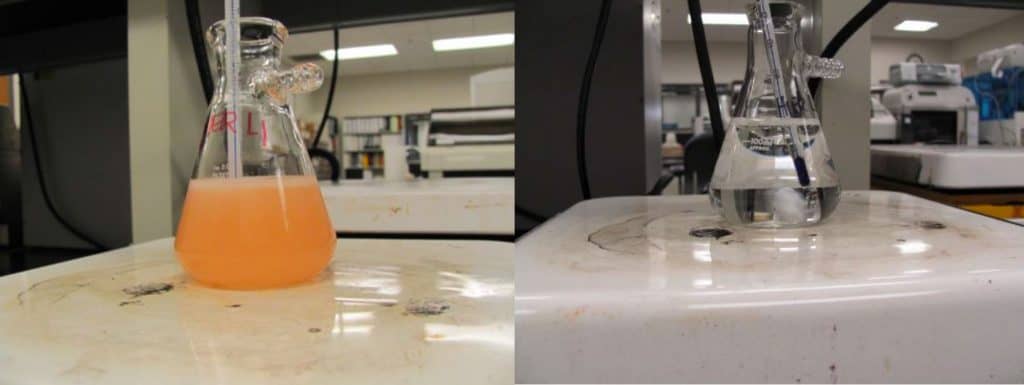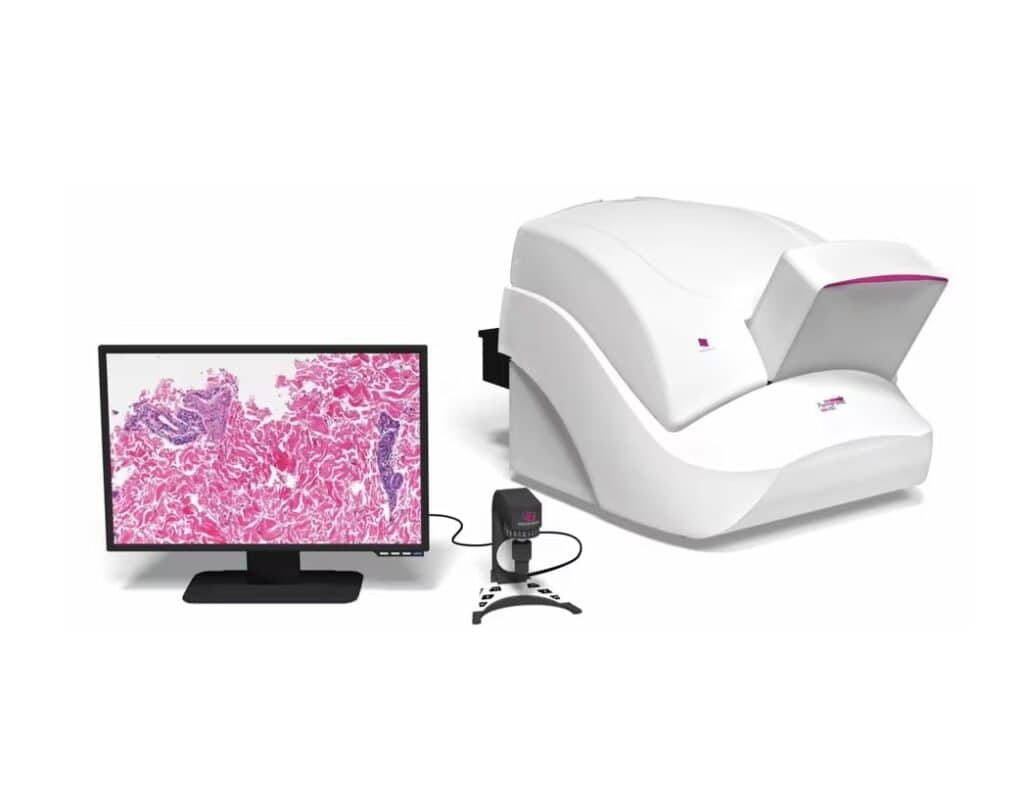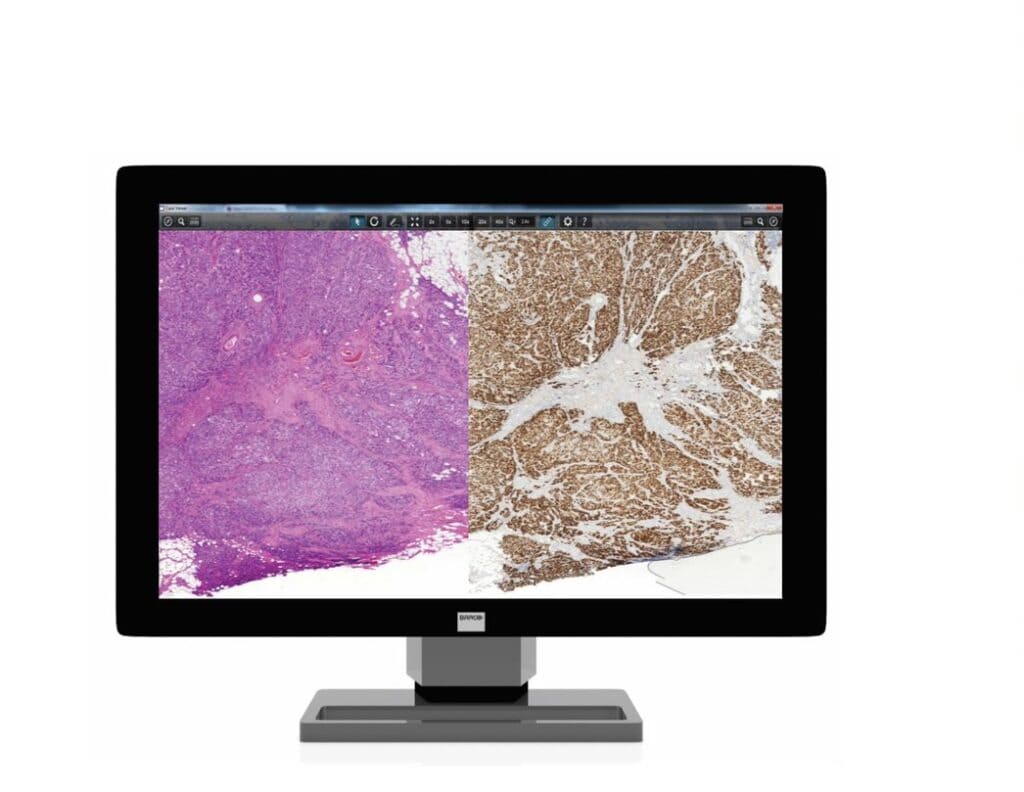Author: Jennifer H. Freeland

When conducting all-in-one deparaffinization and heat-induced epitope retrieval (HIER) procedures for immunohistochemistry (IHC), laboratories can experience inconsistent staining. This typically originates from slides becoming re-coated with molten paraffin when they are removed from the HIER buffer. This causes the IHC reagents from being able to interact with the sample’s antigens. Consistency in IHC staining is important for accurate patient care and efficient laboratory workflow.

By using Dewax and HIER Buffers, you can rely on uniform staining results. Dewax and HIER Buffers L, M, and H have been developed to simultaneously deparaffinize formalin fixed paraffin embedded (FFPE) sections and perform the HIER procedure. Unlike other dewaxing buffers on the market, the Dewax and HIER Buffers have been specially formulated to perform optimally when slides are held vertically in a buffer bath, such as the PT Module1. These buffers have been validated using the UltraVisionTM Quanto HRP DAB detection system by Epredia and with Epredia rabbit and mouse primary antibodies1.

Due to their unique chemistry, the Dewax and HIER Buffers are patented formulas2,3,4. The dewaxing action of these buffers comes from a water-soluble organic solvent1. Although less than one percent in a working solution, the solvent is strongly capable of dissolving paraffin into an aqueous solution at moderate temperatures (55-95°C)1. At the same time, additives such as polyethylene glycol help stabilize the cells and tissues, as well as flocculate paraffin debris as the buffers cool1.

Product Features and Benefits
- Easy to use: These buffers are available as 15X concentrates in 100 mL bottles.Each case comes with 10 bottles of 100 mL of buffer. The technologist simply fills the PT Module reagent tank with 1400 mL of distilled or deionized water and adds one bottle of the buffer concentrate to create a working solution.
- Easy to identify: The buffers are color-coded to assure the technologist that the concentrate has been added to the reagent tank. Since the PT Module carries two tanks, it is possible to simultaneously run two different Dewax and HIER buffers with two different pH ranges. The color coding differentiates the various pH range in each tank.
- Excellent shelf life and flexible storage: The buffers have a shelf life of 18 months and can be stored at room temperature.
- Increased throughput: Each of the Dewax and HIER Buffers, once reconstituted, can be reused for up to three PT Module runs of 24 slides each. That is a total throughput of 72 slides per bottle, and 720 slides per case.
- Verified product performance: Dewax and HIER Buffers have been formulated for optimal performance with eleven (11) different Thermo Scientific paraffin types, see Table 1.

Discover new ways to deliver cleaner slides. Learn more today by contacting your Epredia representative.
Product Descriptions
TA-999-DHBL: Dewax and HIER Buffer L is a low pH (6.0 to 6.4) citrate based buffer. The concentrated solution is a clear, orange liquid.
TA-999-DHBM: Dewax and HIER Buffer M is a medium pH (7.6 to 8.0) EDTA based buffer. The concentrated solution is a clear, purple liquid.
TA-999-DHBH: Dewax and HIER Buffer H is a high pH (8.6 to 9.0) Tris-EDTA based buffer. The concentrated solution is a clear, blue liquid.
References
- Freeland JH, et al. Water-soluble organic solvent improves paraffin displacement in all-in-one epitope retrieval buffers. Journal of Histotechnology. 36(2):51-58, 2013
- Freeland JH and Harvey MA. Dewaxing buffer containing a water-soluble organic solvent and methods of use thereof. European Patent. EP2807249B1. 2018.
- Freeland JH and Harvey MA. Dewaxing buffer containing a water-soluble organic solvent and methods of use thereof. Patent, People’s Republic of China. CN104334717A. 2015.
- Freeland JH and Harvey MA. Dewaxing buffer containing a water-soluble organic solvent and methods of use thereof. US Patent. US8753836B2. 2014.


